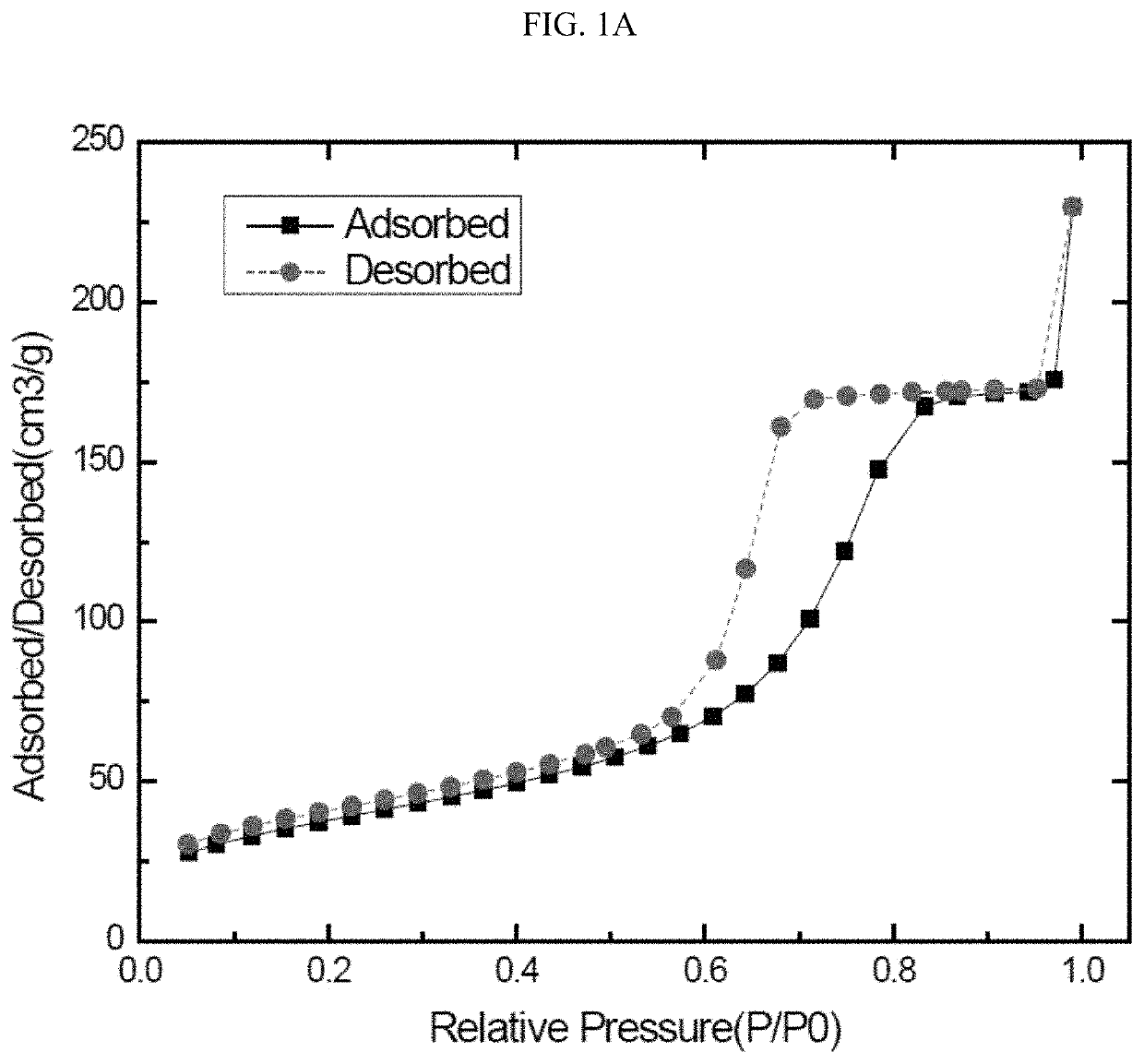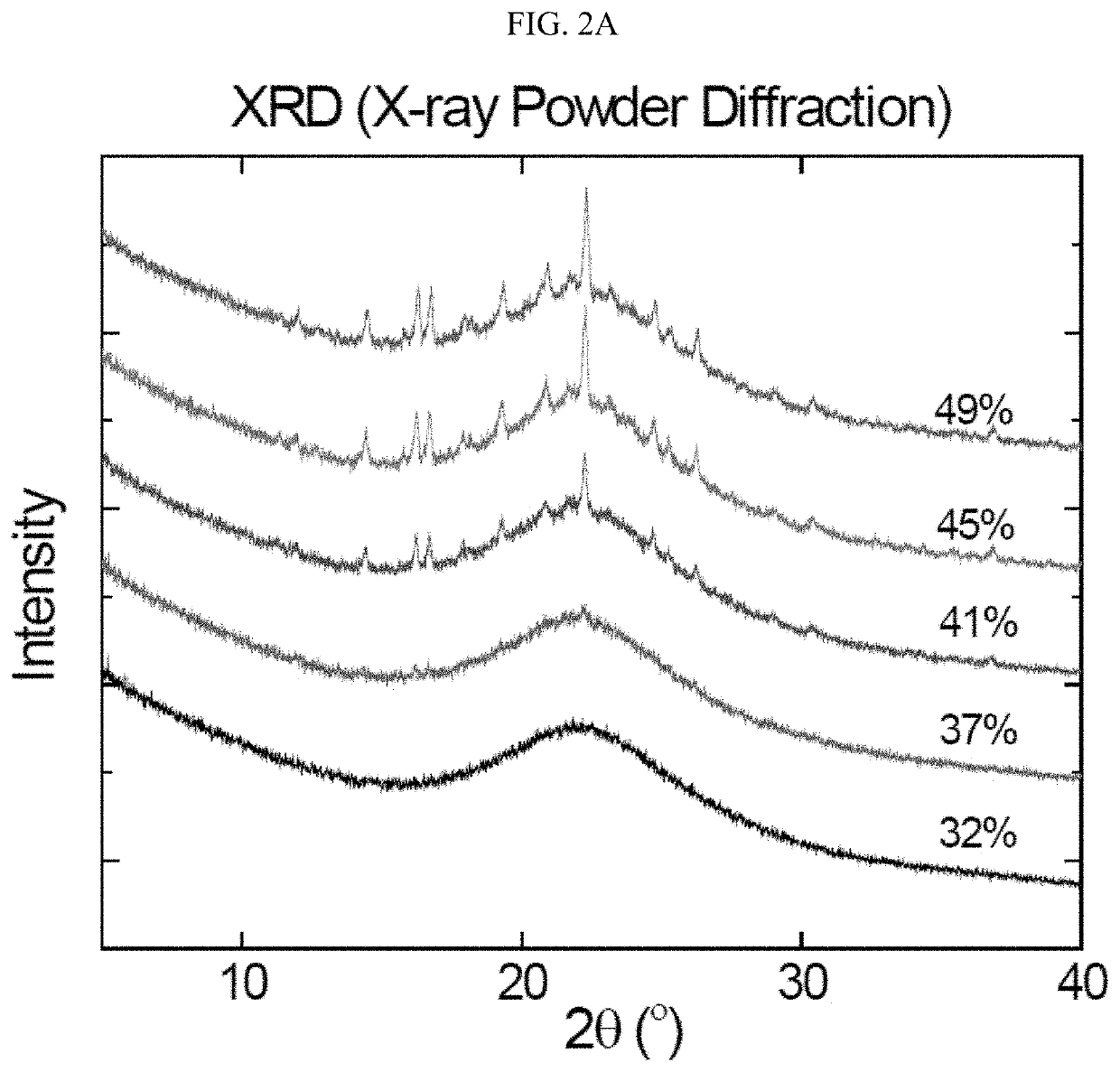Realizing the nano-amorphous state of materials inside nano-porous templates
a nano-porous template and nano-amorphous technology, applied in the field of drug industry, to achieve the effect of long storage shelf life and reduced manufacturing cos
- Summary
- Abstract
- Description
- Claims
- Application Information
AI Technical Summary
Benefits of technology
Problems solved by technology
Method used
Image
Examples
example 1
Preparation with the Method of Fast Evaporation Under Vacuum
[0064]Silica colloidal suspensions (1 nm to 100 nm in diameter), are spread on glass Petri dishes into thin layers for evaporation. These glass Petri dishes are then put inside a vacuum oven with controlled temperature and pressure. The initial temperature and pressure were set to 70° C. and 0.2 atm, and appropriate adjustment on pressure is needed to achieve the fastest evaporation rate while avoiding boiling at low-pressure. Within 30 minutes, most of the solvent water has evaporated and we keep the samples at 70° C. and 0.01 atm for another 3 hours. After that, we bake the samples above 100° C. for one hour to dry the water completely.
[0065]The templates made by the fast evaporation under vacuum method are then analyzed by BET (porous surface measurement based on Brunauer-Emmett-Teller theory) apparatus for pore size distribution. One typical sample made from 22 nm colloids is shown in FIGS. 1A-1B. FIG. 1A illustrates th...
example 2
ctive Ingredients into Dry Templates
[0066]This example describes the method of loading the active ingredients into dry templates. We take the drug Fenofibrate as one specific example of active ingredients. Fenofibrate is used to treat abnormal cholesterol level, which is a poorly water-soluble medicine with the melting temperature of 80.5° C. We load the Fenofibrate (99% crystal) into porous templates in four steps: (1) grinding the Fenofibrate crystal and the porous template into powders, (2) mixing the two types of powders uniformly, (3) pressing the mixture into tablets, and (4) baking the tablets at high temperature.
[0067]More specifically, we first grind the Fenofibrate crystal and the templates into powders, and then mix the two types of powders uniformly. The mixture is subsequently put into a mold and compressed by hydraulic press into tablets, at a high pressure above 10 MPa. The tablets are then baked at a high temperature for multiple hours. During the baking period, the ...
example 3
ic Structure and Temporal Stability of the Composites
[0071]TEM (Transmission electron microscopy), XRD (X-ray Powder Diffraction) and DSC (Differential Scanning Calorimetry) measurements are performed on the composite produced in Example 2 for preliminary analysis on the microscopic structure and amorphous fraction of the active ingredients.
[0072]TEM images of pure template, pure Fenofibrate crystal and the composite are presented respectively in FIGS. 3A-3C. The left panels are the real space images and the right panels are diffraction patterns in the Fourier space. In FIG. 3A, the template is clearly composed by closely-packed silica particles (left panel) and these particles are microscopically amorphous without any crystalline peaks (right panel). In FIG. 3B, the pure Fenofibrate crystal exhibits multiple diffraction peaks in the right panel. In FIG. 3C, the composite is formed by filling the template pores with re-solidified Fenofibrate melt (left panel), and the drug is now am...
PUM
| Property | Measurement | Unit |
|---|---|---|
| diameter | aaaaa | aaaaa |
| pressure | aaaaa | aaaaa |
| temperature | aaaaa | aaaaa |
Abstract
Description
Claims
Application Information
 Login to View More
Login to View More - R&D
- Intellectual Property
- Life Sciences
- Materials
- Tech Scout
- Unparalleled Data Quality
- Higher Quality Content
- 60% Fewer Hallucinations
Browse by: Latest US Patents, China's latest patents, Technical Efficacy Thesaurus, Application Domain, Technology Topic, Popular Technical Reports.
© 2025 PatSnap. All rights reserved.Legal|Privacy policy|Modern Slavery Act Transparency Statement|Sitemap|About US| Contact US: help@patsnap.com



